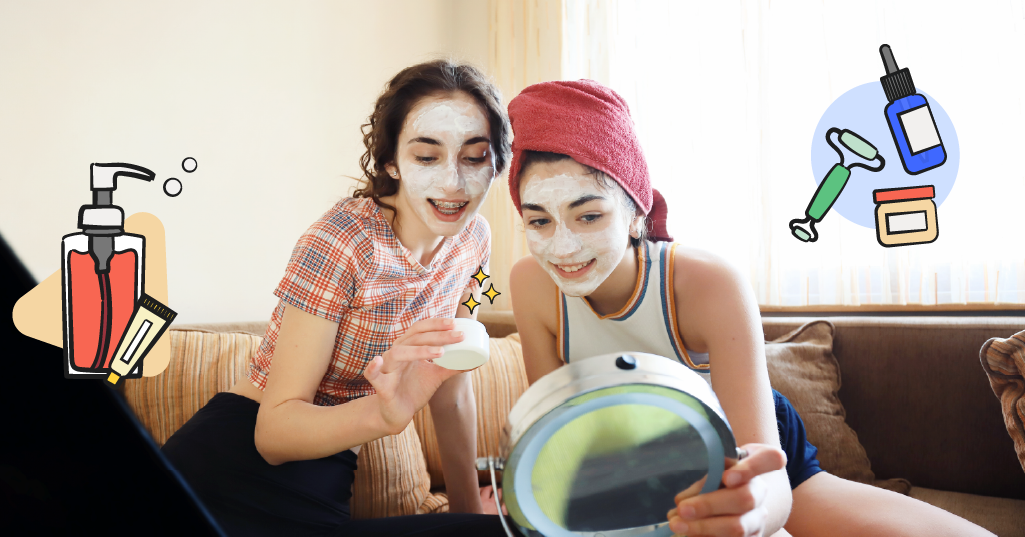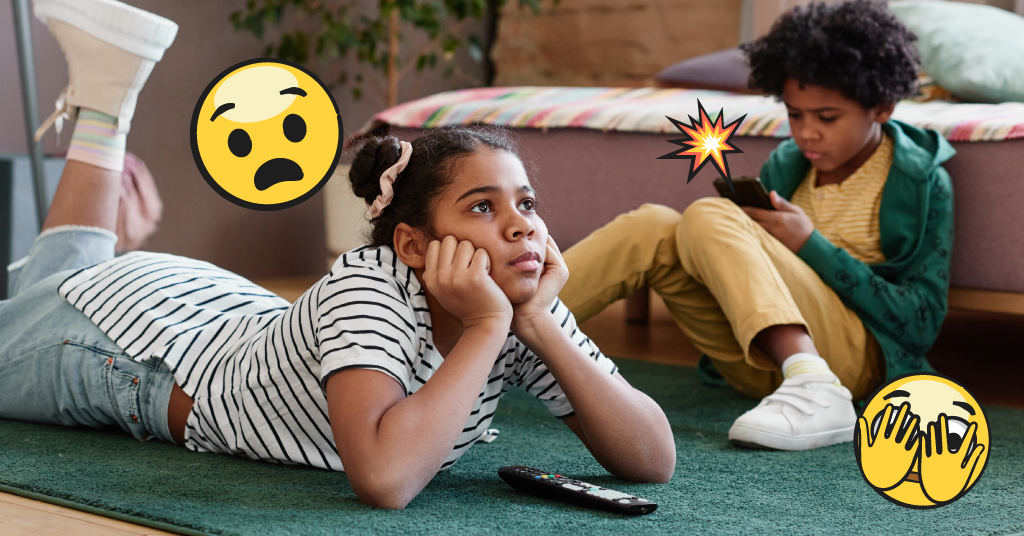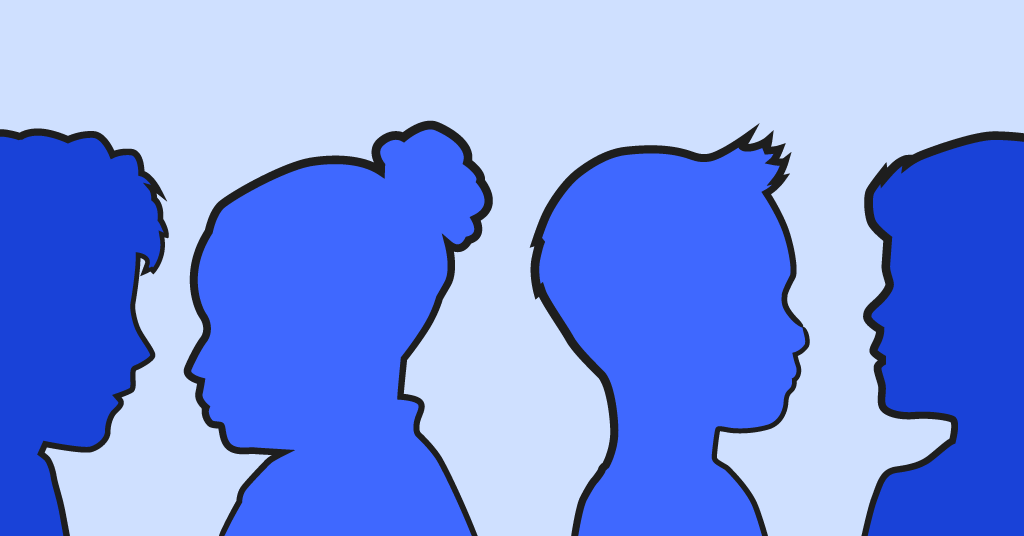
In the ‘80s and ‘90s, our choices for skin care products were pretty limited — stinging Stridex pads, Clearasil pimple cream (mainly used as a very obvious coverup), and mom’s blue tub of Noxzema face wash. And even these didn’t become a staple until late middle school, generally.
Fast-forward to today and 11-year-olds are shopping at Sephora and throwing around terms like retinol and hyaluronic acid. Kids of this generation — Gen Alpha, which has a start date of around 2010 — have access to unlimited information about skin care thanks to the internet, as they follow the advice of TiKTok influencers and watch videos from viral dermatologists on YouTube.
All this information, when combined with the insecurity and bodily changes that are part and parcel of being a tween, means that kids are especially vulnerable to promises of instant beauty, glowing skin, and all of the social benefits that come with them.
But this new skin care routine obsession that some Gen Alpha kids are developing is a drastic change from what children traditionally have worried about. Zits are one thing, but a fear of wrinkles before puberty even really kicks in is entirely different.
In this blog post, we’ll explain why skin care routines for tweens have risen to new levels of interest among tweens, how social media has helped fuel it, and what parents need to know about potential dangers and complications from it.
What Is a Skin Care Routine for Kids?
Most folks are familiar with skin care routines — it’s the combination of products you use to take care of your face. They’re popular among adults because the effects of age can lead to changes in skin condition like wrinkles and dark spots. But with kids, this need is less acute because, by and large, a child’s skin is usually in good shape. This isn’t to say that some kids don't have dermatological issues, and teens of course have always struggled with acne and oily skin.
And to be fair, the skin care routines we had as teens weren’t exactly the healthiest. Rubbing harsh and acidic Stridex pads probably wasn’t the best way to treat acne, but back then we didn’t have a ton of information.
Today, there are more gentle and effective skin care routines for kids that clean your face and prevent blemishes, along with billions of gigabytes of data online about which is best. And it’s more than just cleaning and moisturizing; there are all sorts of serums, tonics, and salves that promise to do wonders. But tweens may be overdoing it, according to some dermatologists.
Some of the Popular Products
Want to stay in the know of what kids are researching and using? Here are some of the most popular ones. Keep in mind that cosmetic products don’t have to have FDA approval, and there are different opinions on whether they work and to what extent. Different products can also have different levels of ingredients and efficacy.
- Face masks: There are tons of masks out there — from sheet masks to goopy ones made of clay — that seek to address a number of different issues like reducing oil, moisturizing, and even promoting relaxation.
- Pimple patches: Ironically, kids are wearing these tiny stickers proudly to school. They cover up zits and may contain salicylic acid (the same ingredient in Stridex pads!) or hydrocolloids to help heal blemishes.
- Vitamin C: The same chemical found in a juicy orange is used to help slow aging in the skin and reduce dark spots and discoloration.
- Retinols: These serums are used to slow the aging process and may fight acne.
- Hyaluronic acid: Used to plump up the skin and make it look more hydrated.
Social Media’s Effect on this Trend
There’s more than just word of mouth that’s fueling this interest in middle schools across the U.S., and it's — you guessed it — social media. Mainly TikTok, though Instagram also contributes.
Exposure
Viral videos about skin care have enabled this obsession to reach millions of kids, both organically (when kids specifically search for advice) and passively, as when TikTok’s algorithm just shows it to a child who’s casually scrolling. If you watch one Get Ready With Me (GRWM) video, you’ll be shown more and more, leading to a feed filled with skin care content and eventually ads for youth-oriented products like Drunk Elephant.
Filters and the quest for flawless perfection
This younger generation has been exposed to AI-generated filters since they were using iPads to make puppy-dog face videos. As they’ve grown up, they’ve experimented with beauty filters that smooth skin and remove any imperfection. Now, learning about how complicated beauty routines may help slow the process of aging (a wild thought for an 11-year-old!), they’re seeking to replicate what older people are doing.
Skin care as a status symbol
Being able to afford all of these products isn’t something in reach of every young person, which makes a $40 moisturizer or $80 vitamin C serum a status symbol. Having a collection of these products — and making videos with them on social media — is a way to strut one’s financial status, like carrying the recently coveted Stanley tumbler.
Potential Dangers and Body Image Concerns
Too much focus on one’s appearance can have negative effects on a child’s well-being and body image. The quest for achieving "perfect" skin may lead tweens to develop unrealistic beauty standards and expectations, which can make them feel inadequate when it comes to their appearance. Additionally, constantly comparing themselves to idealized images promoted by skin care brands and influencers may erode their self-esteem and confidence.
As for physical dangers, overuse of skin care products, particularly ones that contain harsh chemicals or fragrances, can irritate the skin and lead to redness, inflammation, and allergic reactions. A tween’s skin is often more sensitive than an adult's, making young people more susceptible to adverse reactions. Too many products can disrupt the skin barrier and also increase sun sensitivity.
Make sure you’re teaching your children about safe skin care practices. Encourage moderated and balanced skin care routines for tweens, and consult with healthcare professionals if they have concerns about their child's skin health or the safety of skin care products. And your child should be taking advice from a dermatologist about any skin concerns — not internet strangers.
The Actual Skin Care Kids Need
Kids do need some skin care products, like any other human. Faces need to be washed and moisturized, if dry. And if your child is out in the sun, sunscreen is always a necessity. It's all about giving their delicate skin the care and protection it deserves, keeping them feeling fresh, hydrated, and shielded from harmful UV rays. But worrying about wrinkles or dark spots (which don’t even exist yet for most children) may be a step too far.
How Bark Can Help
If you’re worried about the apps your child has access to, Bark’s screen time tools and web blocking features can help you limit or restrict access so they’re not constantly scrolling and consuming potentially harmful videos.
Our monitoring feature — both in our downloadable app and our groundbreaking Bark Phone — can also scan texts, DMs, searches, and more for potential signs of body image issues (as well as other dangers like bullying and depression). You’ll get an alert if something concerning is found so you can check in and make sure everything is okay. Alerts also come with recommended conversation starters and advice for addressing hard topics like this one. Raising kids in the digital age isn’t easy, which is why we’re dedicated to supporting parents all over.
Read more
Bark helps families manage and protect their children’s digital lives.





